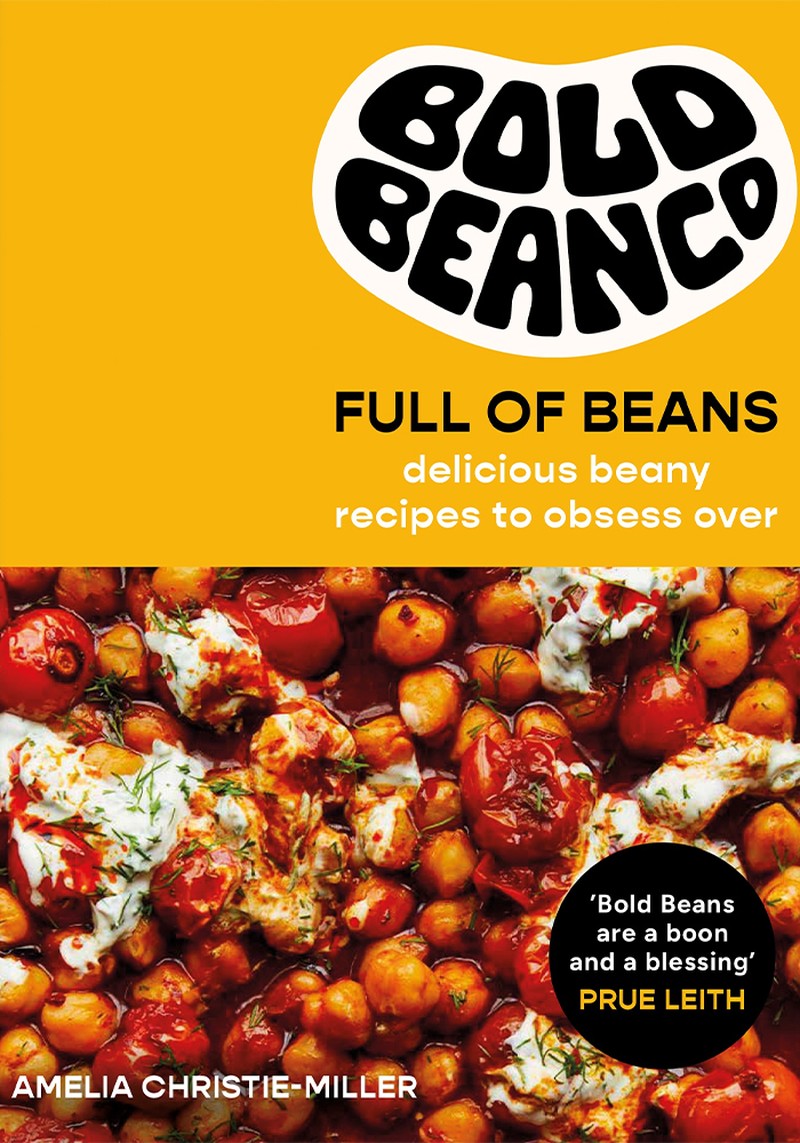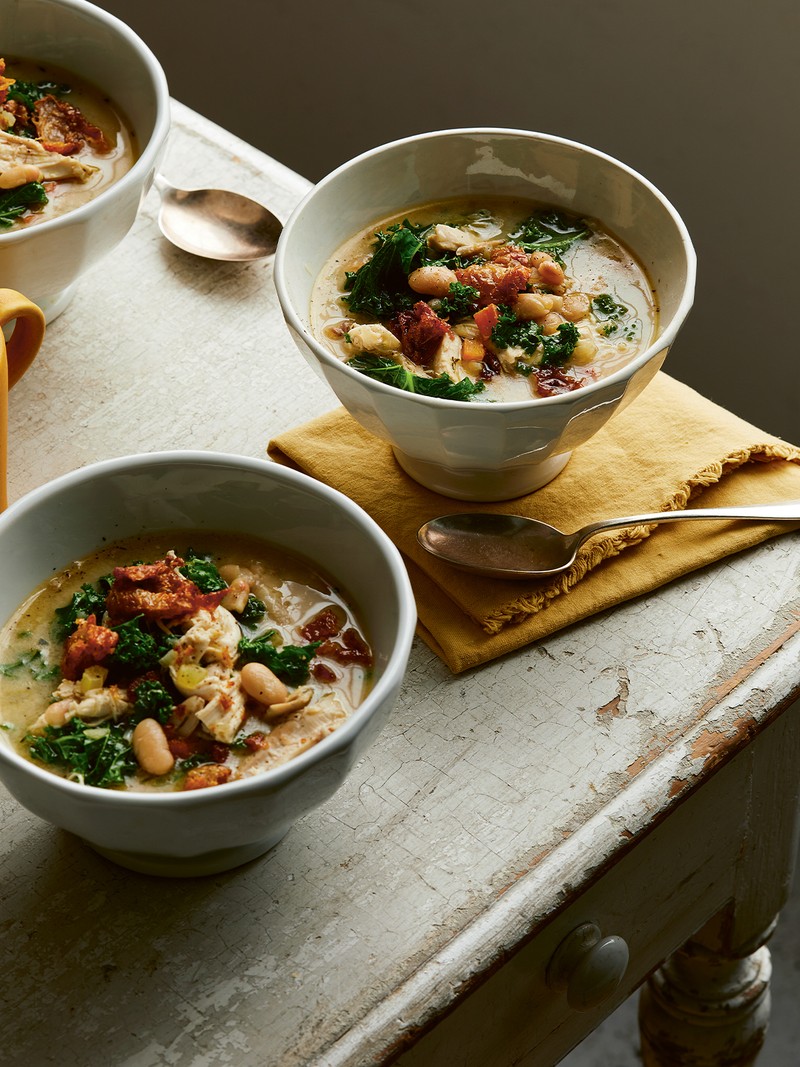
5 Easy & Delicious Ways With Beans
Beans have had it tough. They’ve been soft boiled and hard done by, unloved and side dished, confined to the back of the cupboard and synonymous with tasteless hippy fodder. I started my life hating beans. Cold, tasteless three bean salads, sickly baked beans from a tin and bullet-like chickpeas floating in a curry – no thank you. Fast forward 20 years and I’m running a bean brand to try and persuade people they’re the world's best food.
Like most interesting stories, it started with a hangover. I was on a foreign exchange swap in Madrid and after another night out filled with broken Spanish, I found myself hungry and lazy. I’d bought some Judion beans – specified by Nigel Slater for a recipe – and they were all I had in the house. I opened the jar and spooned one into my mouth. I distinctly remember closing my eyes to properly immerse myself in that moment. It was incredible – that was when I realised beans didn’t have to be sad and soulless.
Working at the forefront of food culture meant I saw beans differently; I saw them as something delicious and aspirational, and the obsession deepened. But I also realised something else: I was very alone in this bean obsession. It came down to two things: the quality of the beans I was eating and the #beanspo I was seeing from the chefs I was working with. When Covid hit and I was made redundant from my hospitality role, I decided to turn this feeling into something that would make beans cool – and Bold Bean Co was born.
Inspired?
Here are 5 recipes to try at home…
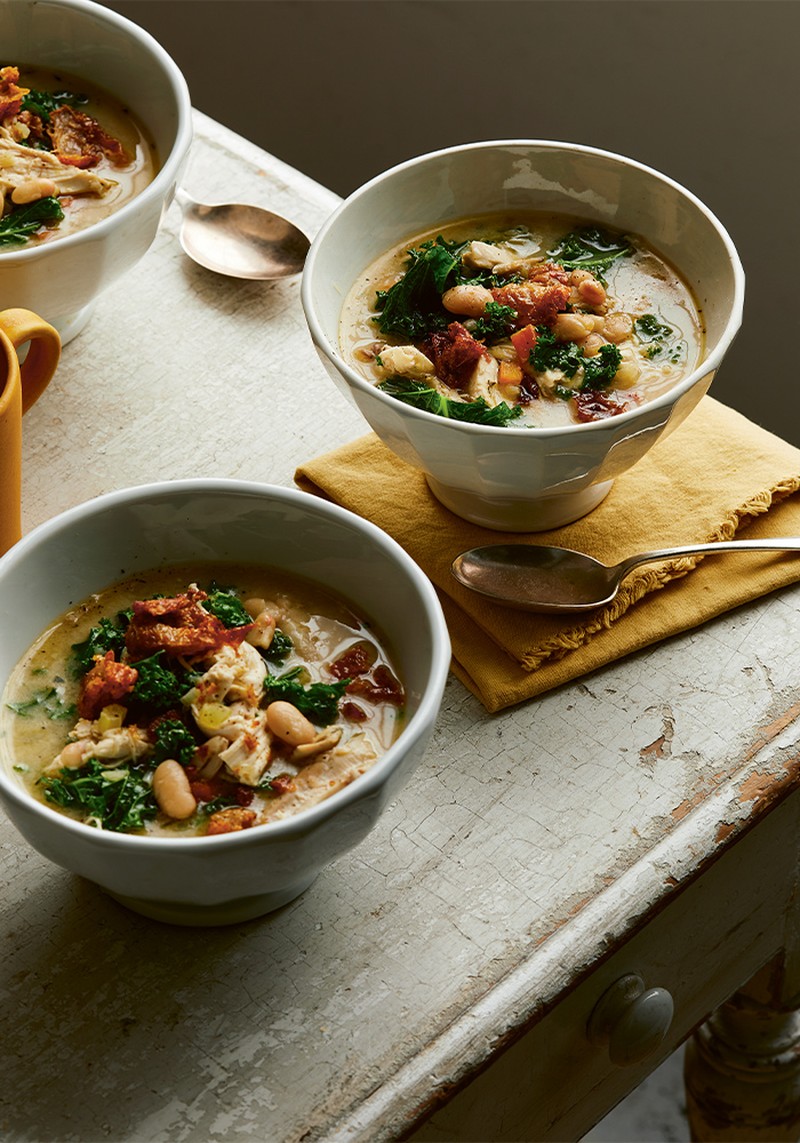
Cosy Chicken & White Bean Soup With Crispy Chicken-Skin Croutons
Think of this as a soup for the soul. It’s made using leftover roast chicken – save some of the skin for the crispy chicken-skin topping. The soup features two types of stock – chicken stock and bean stock – creating layers of flavour. It’s super fragrant with fresh and dried herbs, and the milk addition is an old Italian trick.
If you have any leftover chicken skin from your roast, this is the moment to turn it into something the table will be fighting for. Peel it off the chicken and heat a deep, heavy-bottomed saucepan over a medium-high heat (you don’t want the hob
too hot or you’ll risk burning the chicken skin).
Add a tablespoon of the olive oil, then lay the chicken skin in the pan in a single layer. Fry for three to four minutes on each side, moving the pieces around so they crisp up evenly. Once crisp, remove them using tongs and transfer to a plate lined with paper towels. Leave all the rendered fat in the pan to start your chicken soup.
Add the remaining oil to the pan (use a bit less if you had lots of chicken fat), reduce the heat a little and chuck in the onion, carrot and celery. Season, stir to coat the veggies in the oil, then gently cook for 15 minutes to soften.
Chuck in the garlic, rosemary and oregano, and cook for a further few minutes, then add the chicken and kale, and stir everything together. Season again, then pour in the chicken stock and milk. Add the beans with their bean stock and bring to a simmer. Add a bay leaf at this point, too, if you like. Cook for 10-12 minutes.
Divide between deep bowls, then top with an extra splash of olive oil and a handful of the crispy chicken skin. Serve with lemon wedges on the side for squeezing over.
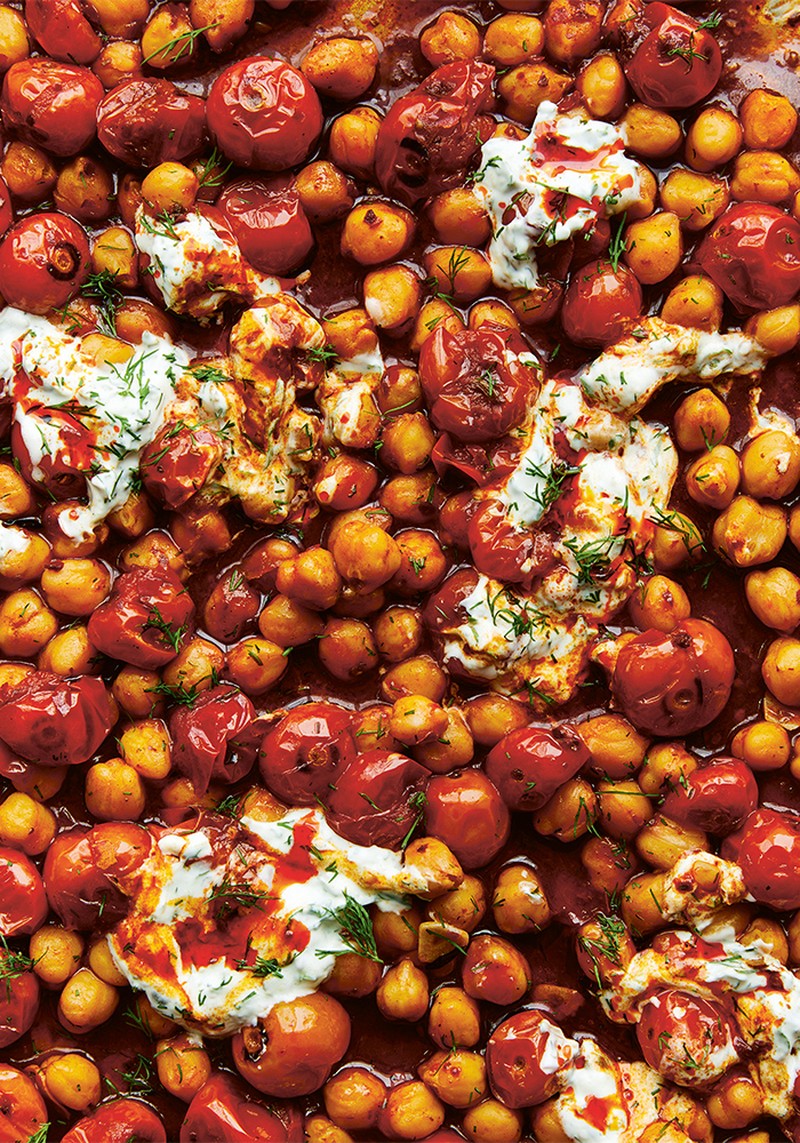
Chickpea, Tomato & Harissa Stew With Herby Yoghurt
This is an iconic Bold Bean dish. Sweet cherry tomatoes, spicy harissa and chickpeas make an absolute banger of a dish – and it only takes 20 minutes. The tomatoes get blistered and charred so they’re bursting with flavour, the bean stock makes everything super saucy and the harissa kick is balanced with creamy, herby yoghurt.
Heat the olive oil in a non-stick frying pan over a high heat. Add the cherry tomatoes and cook for five to six minutes until blistered, soft and slightly charred. Lower the heat to medium, then add the garlic and fry for one to two minutes, stirring, until fragrant.
Add the chickpeas, along with their bean stock, and bubble for three to four minutes until reduced by half. Stir through the harissa and simmer for two to three minutes more.
Meanwhile, in a bowl, mix together all the ingredients for the herby yoghurt. Adjust the seasoning and acidity to your taste, adding a squeeze of lemon juice if you like it very lemony.
Spoon the chickpeas into warm bowls and top with the herby yoghurt. Serve with warm flatbreads and/or cooked couscous or quinoa, if you like.
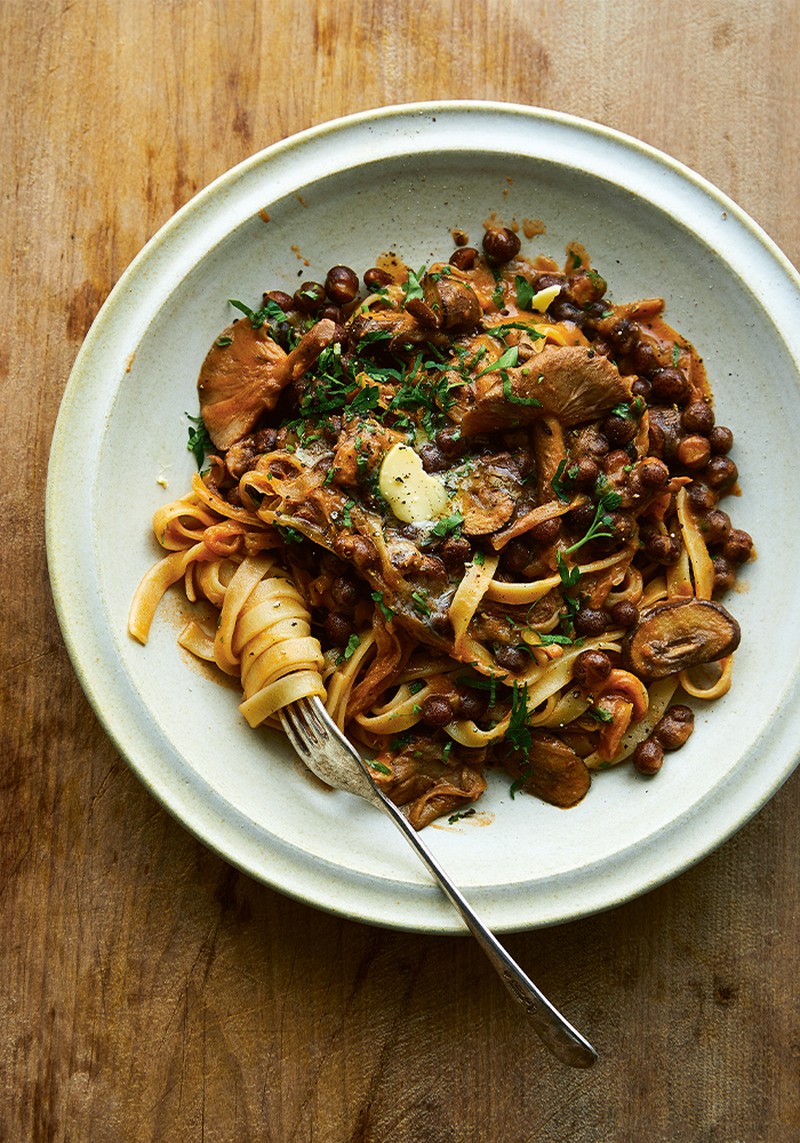
Carlin Pea Stroganoff
This dish is the dictionary definition of heartwarming. The bean stock helps create a glossy sauce that’s full of umami flavour from the mushrooms. Choose your carb accompaniment – mop up the leftovers with crusty bread, pour over silky mashed potatoes or spoon it over a big bowl of rice, baked potatoes or buttered tagliatelle.
Start by dry-frying your mushrooms in a large, deep-sided casserole pan over a medium-high heat. Do this in two batches, first frying half of the mushrooms for about five minutes until coloured and crisping at the edges, then removing to a plate and repeating with the other half. Dry-frying gives them a bit more texture.
In the same pan, heat the olive oil over a medium-low heat. Add the onions, along with a pinch of salt, and cook gently for 20-25 minutes, stirring occasionally so that they don’t catch. Cooking the onions slow like this will bring out a lovely, caramelised flavour.
Add the thyme, tomato purée, sweet paprika, cayenne pepper and garlic to the onions and cook off for another two minutes until some of the onions start sticking to the bottom.
Deglaze the pan with the alcohol, then let it bubble off for a few minutes until it is reduced by half.
Now gradually add the stock, stirring the mixture to a smooth paste before adding more. Once all your stock is added, bring your mixture to a simmer for two minutes to thicken.
Return the mushrooms to the pan, along with the crème fraîche, Dijon mustard and carlin peas, with their bean stock. Stir in the Worcestershire sauce or Henderson’s Relish, along with most of the parsley. If using, swirl through a knob of butter to give it a bit more richness. Simmer for about three minutes more to warm it all through and ensure the mixture is creamy and glossy. Season with salt and lots of cracked black pepper.
Serve with the carb of your choice, topped with the remaining parsley, with some steamed green beans on the side, if you like.
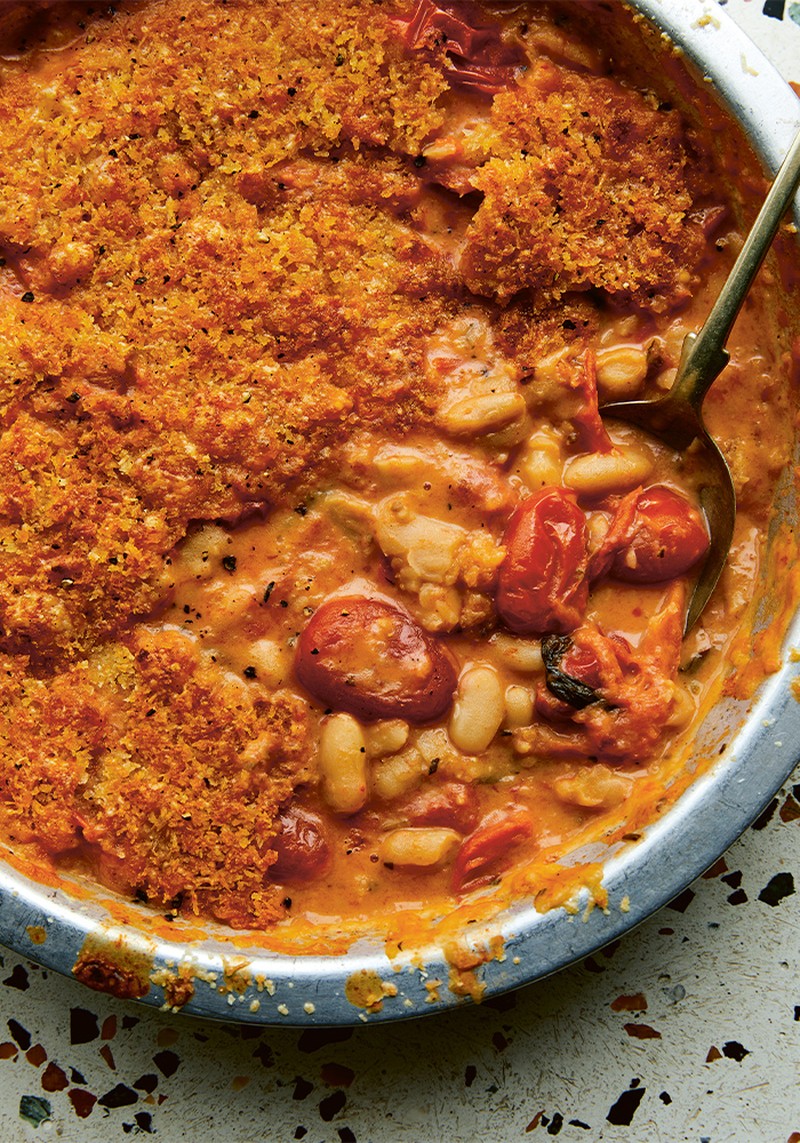
Cherry Tomato, Anchovy & White Bean Gratin
Sweet cherry tomatoes and salty anchovies make up the base of this wow-worthy gratin. We’ve swapped cream for lighter crème fraîche and suggest pairing it with a zingy chicory and caper salad to balance out all the flavours. It's also delicious with charred lemony broccoli if you prefer to keep it simple.
Tip the anchovies and their olive oil into a medium saucepan over a medium heat. Add the garlic, rosemary and chilli flakes, if using, and cook for a minute until the anchovies start to sizzle and melt.
Tumble in the cherry plum tomatoes and basil. Cover the pan with a lid and give it a vigorous shake to coat the tomatoes in the oil. Reduce the heat to low and simmer for 25-30 minutes, or until the tomatoes have softened and broken down. Stir halfway through, adding the vinegar and sugar to taste, if using.
Add the white beans with their bean stock and stir to combine into the tomatoey juices. Then add the crème fraîche and lemon zest, and season to taste with salt and plenty of cracked black pepper. Increase the heat to medium and let the beans bubble for 5-6 minutes until you have a slightly thickened, creamy stew.
Meanwhile, in a small bowl, mix together the parmesan or pecorino, gruyère or cheddar, breadcrumbs, some cracked black pepper and the olive oil.
Preheat the grill to medium. Decant the contents of the saucepan into an ovenproof dish. Sprinkle the cheesy breadcrumbs over the top, then pop under the grill for three to four minutes, or until golden, checking often so it doesn’t burn.
Meanwhile, make the salad. Discard the woody ends of the chicory bulbs, then separate the leaves and slice them thinly. Put into a bowl with the rest of the ingredients and toss well to coat.
Leave the gratin to sit for a few minutes before serving with the salad.
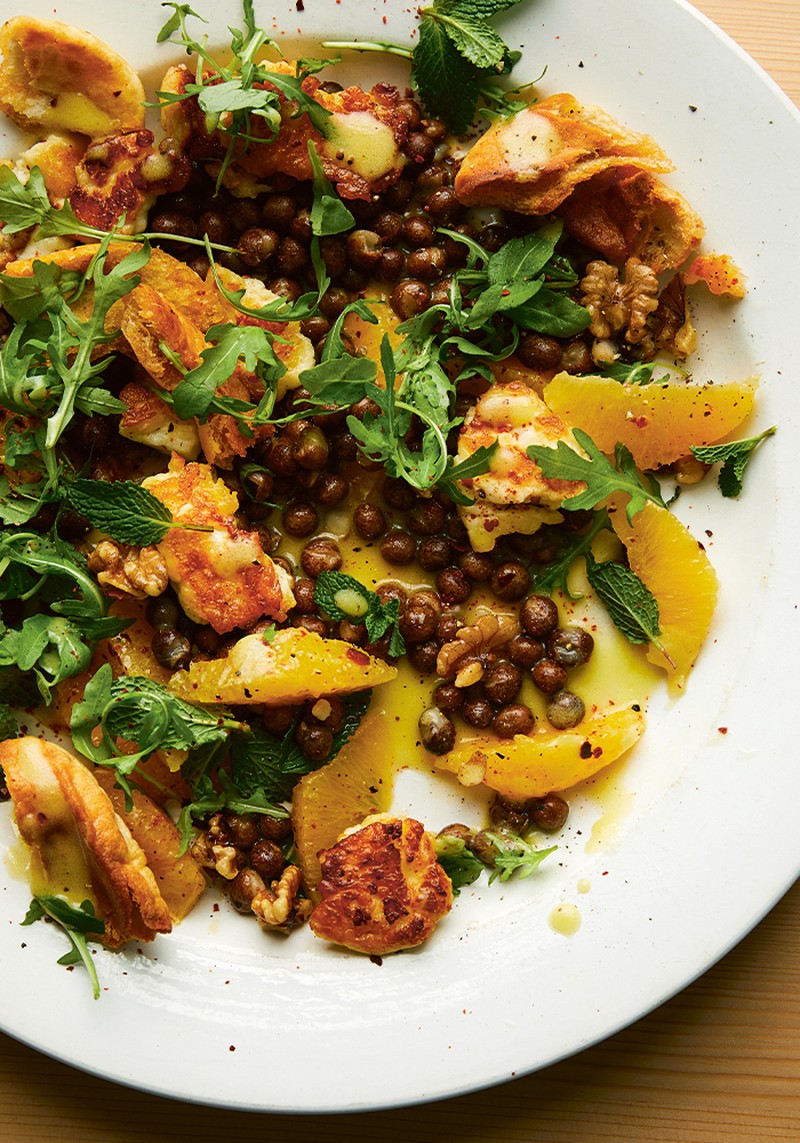
Crispy Baked Halloumi, Carlin Pea & Orange Salad
This super easy lunch is a perfect antidote to sad desk salads. Think of it like an orange fattoush. It’s light, refreshing and you get a salty kick from the cheese, freshness from the herbs, sweetness from the oranges and crunch from the croutons. Plus, it’s a great way to use up old pittas or leftover bread.
Preheat the oven to 200°C/180°C Fan/400°F/Gas Mark 6.
Tear the halloumi and pitta breads or leftover bread, if using, into rough bite-sized chunks. Tumble onto a baking tray and drizzle with the olive oil and chilli flakes, if using. Season, remembering that halloumi is already salty. Bake for eight minutes, flipping halfway, then add the walnuts and bake for a further three to five minutes until everything is golden.
Meanwhile, prep the rest of the ingredients and make the dressing. Cut the peel and pith away from the oranges, then use a small, serrated knife to segment them, catching any juices in a bowl. Set the segments aside. Squeeze any excess juice from the off-cut pith into the bowl as well. Use this as the base for your dressing: add the mustard, honey, vinegar or lemon juice, chilli, if using, and olive oil, then season with just a pinch of salt and pepper, and mix well to combine.
Add the drained carlin peas, mint, orange segments and salad leaves to a bowl, along with the crispy baked halloumi and walnuts.
When you’re ready to eat, pour over the dressing and mix well, scatter over the croutons, then tip onto plates or a serving platter and serve.
Recipes courtesy of Full of Beans: Delicious Beany Recipes To Obsess Over by Amelia Christie-Miller. Published by Kyle Books.
Photography by Sam A Harris.
